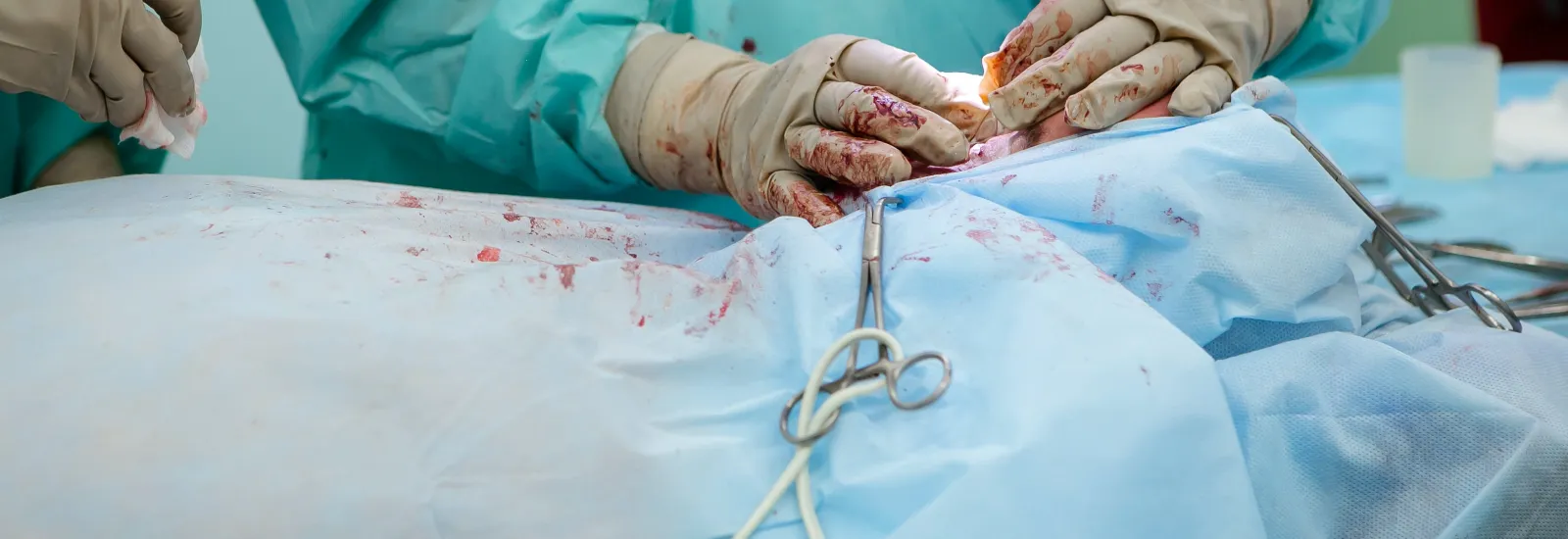
What is open heart surgery and who needs it
3-minute read
Cardiac surgery has
made tremendous advances over the years. Today, minimally invasive heart
surgery takes place through tiny incisions with miniature tools. However, some
procedures still require a more traditional approach known as open-heart
surgery. Open-heart surgery isn't for everyone, but it might be the solution
you need to address your heart condition.
Defining open-heart surgery
Every type of cardiac surgery takes place in or around the
heart muscle. The goal is to correct problems with your heart, its valves, or
the arteries connected to the heart.
Here's what typically happens while your surgeon operates:
- You're given general anesthesia. This makes you go to sleep so you don't experience pain during the procedure. An anesthesiologist monitors you throughout the surgery, adjusting the amount of medication administered as necessary.
- Your surgeon makes an incision in your chest. The
incision is typically between 6 and 8 inches long, depending on your procedure
and other factors. The surgeon then cuts through your breastbone, spreading
your ribs apart to reach your heart.
- You are connected to a heart-lung bypass machine. This specialized equipment stops your heart and takes over its responsibility for pumping blood. This allows your surgeon to operate on your heart without it beating. Not all open-heart surgeries involve a heart-lung bypass machine.
Once your surgeon performs the operation, they remove the
heart-lung bypass machine (if used) and close your chest wall.
Who needs open-heart surgery
More than 2 million people across the globe have open-heart
surgery every year, according to the National Heart, Lung, and Blood Institute.
This procedure helps with many heart problems, including:
- Atrial fibrillation (AFib). AFib is the most common form of heart arrhythmia, or irregular heartbeat. AFib causes chest pain, shortness of breath, and other symptoms.
- Congenital heart defects. These issues are
present at birth and affect the heart's structure and function.
- Coronary heart disease. Often caused by a
buildup of plaque in your arteries, coronary heart disease can cause heart
attack and other complications if it isn't treated.
- Heart failure. This condition
develops when your heart doesn't get enough blood to pump or isn't strong
enough to pump it.
- Heart valve disease. Your heart has four valves, and any of them can become damaged or diseased. A damaged heart valve might leak (called regurgitation) or get too narrow (called stenosis). Heart valve diseases can lead to complications, including stroke and heart failure.
To treat these conditions, your surgeon might prescribe one
of these open-heart surgery options:
- Coronary artery bypass grafting (CABG). During bypass surgery, a healthy artery gets connected to a clogged artery. This allows blood to bypass the clogged area and restores blood flow to your heart.
- Heart transplant. Your failing heart is replaced
by a donor's heart.
- Maze procedure. The surgeon makes tiny cuts in
your heart muscle to create a maze of scar tissue that disrupts the electrical
activity that causes arrhythmias.
- Valve repair or replacement. Damaged or diseased heart valves might be repaired with clips, plugs, or supportive rings. During a valve replacement surgery, the valve is replaced with an artificial heart valve, an animal valve, or a valve from a human donor.
Preparing for open-heart surgery
Before open-heart surgery, you'll need to have imaging,
blood work, and other tests. Follow your care team's orders and have these done
in a timely manner to ensure there are no obstacles to your procedure.
Also, be sure to ask questions. Learn all you can about the
procedure and your recovery. Have a friend or family member join you during
your preoperative appointments and take notes so you remember everything you
learn.
The day before your appointment, you'll be instructed to
stop eating or drinking. You might also need to stop taking certain medications,
but only do so if your care team tells you to.
After surgery, you'll stay in a recovery room or the
intensive care unit (ICU). Staff members will watch you to ensure you don't
experience complications, such as blood clots. After a few days, you might move
to a regular inpatient room.
You'll also begin a cardiopulmonary rehabilitation program as soon
as it's safe. This supervised program helps you regain strength and prevent
future heart problems. You also play a key role in your recovery. Participating
in rehabilitation and completing the prescribed exercises can increase your
likelihood of a positive outcome after open-heart surgery.
Full recovery depends on the surgery you undergo and other factors. It can take up to 12 weeks and possibly longer for some people.
Is your heart giving you trouble?
Experts at the Reid Health Heart & Vascular Center are here to help.

